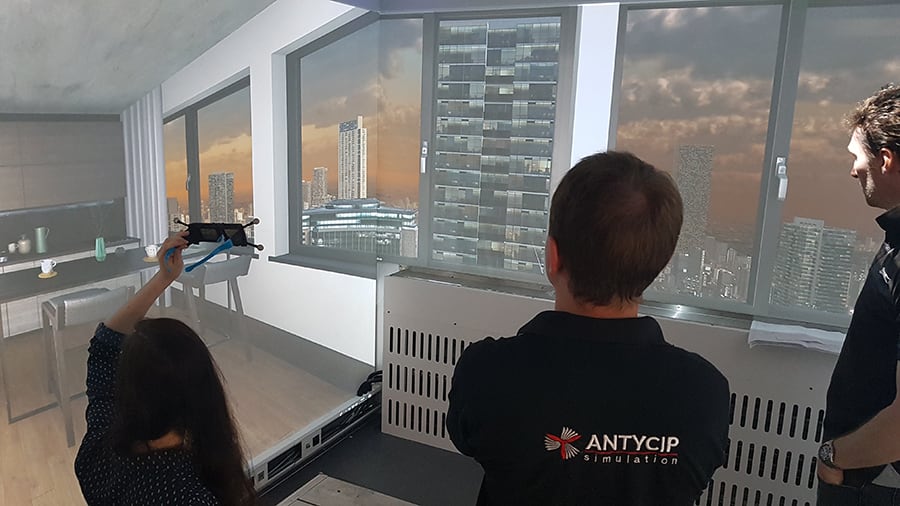A projected 3D virtual reality system will enhance the realism of a new hydraulically-powered simulator to be used by researchers to study the human effects of sway in high rise buildings.
The “Cave-type” VR system will project photo-realistic images of a cityscape and internal environments onto the walls of the simulator, at the Faculty of Engineering & Design at the University of Bath, which is mounted on hydraulic pistons able to move it back and forth up to 40cm horizontally.
The facility launches next month and is one of two being developed in the UK under the £4.8m VSimulators project, set up to study the psychological and physiological impacts of working and living in skyscrapers. The second chamber, at the University of Exeter, will open in 2020.
Researchers at Bath plan to study the effect of sway on tiredness, mood, concentration and motivation and determine the level at which negative responses occur and acceptable amounts of movement. A range of climate, sound, air quality and visual controls will make it possible to examine the effects in different environmental scenarios.
Dr Antony Darby, head of civil engineering at the University of Bath, told BIM+: “Test subjects will wear cinema-style 3D glasses to experience the VR, which will provide a sense of context and realism when sitting or working in a specific space, whether that is an office, apartment, hospital, or shop etc.
“The external views will allow us to explore how height within a building influences acceptability, for example people may accept movement at the top of a 600m-tall building, because they expect it, but they may not be so happy feeling movement when 50m above the ground.”

The VSimulators project could result in radical new approaches to how buildings are designed
Visualisations of weather, such as a dark stormy day or a calm sunny day, could also affect the perception and acceptance of movement, he added.
The VR software was developed by Antycip Simulation and the immersive scenarios were developed by Brighton-based company Make Real. Three ultra short-throw projectors mounted on the roof of the chamber project through openings onto three of the side walls of the room. The fourth wall is covered by various equipment and therefore does not have a projected surface.
“We went for projected VR rather than a headset to allow test subjects to carry out normal work activities rather than being immersed in a purely virtual world,” said Darby. “Although the visuals do not currently move relative to the building movement, that is one of the next stages of development.”
The VSimulators project could result in radical new approaches to how buildings are designed. Current guidance is based upon perception thresholds and whether or not the individual can feel the motion of a building swaying.
A more effective approach might take into account how the building is used, the frequency and duration of motions and other factors. If sway cannot be reduced, it may be possible to offset the impact of tiredness, for example by increasing lighting levels, improving air quality, or reducing temperature.











